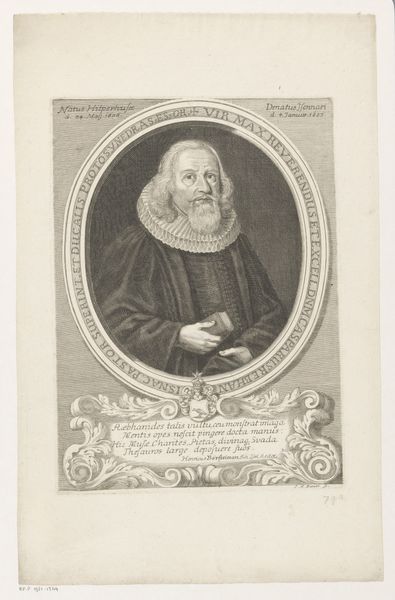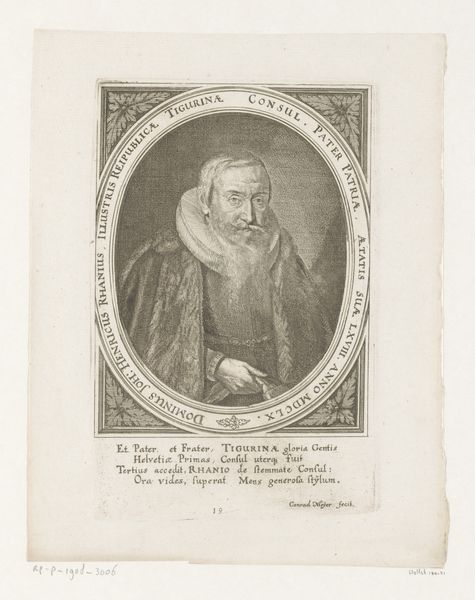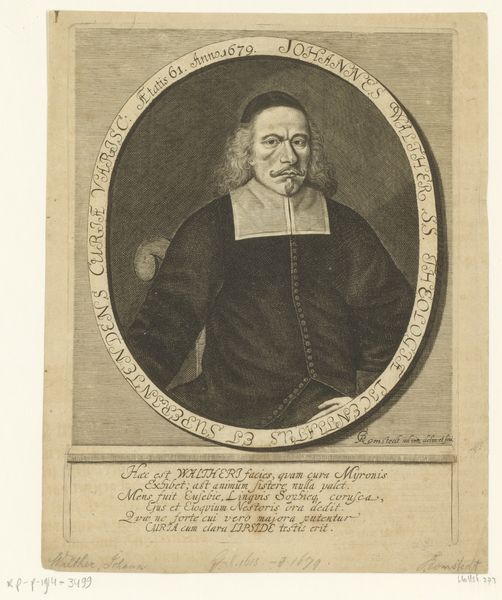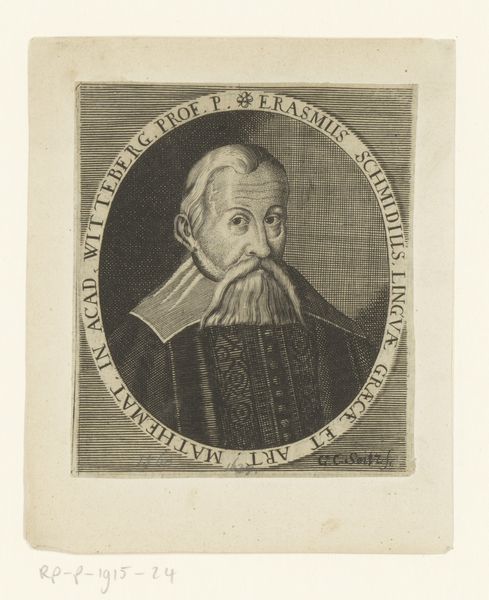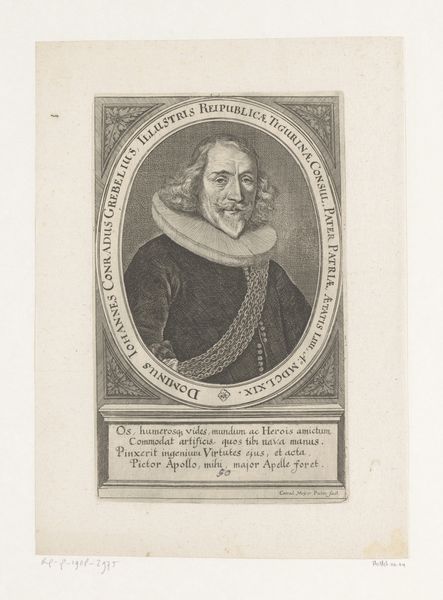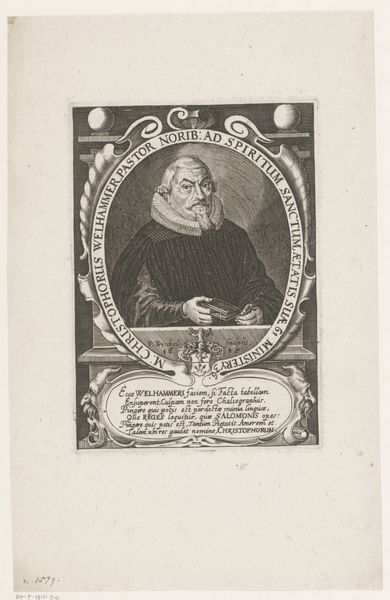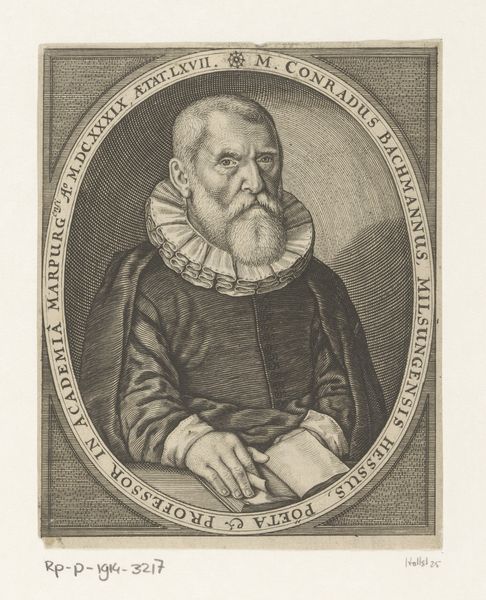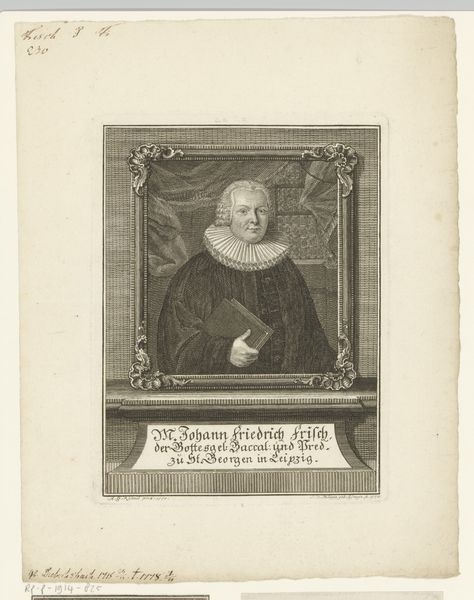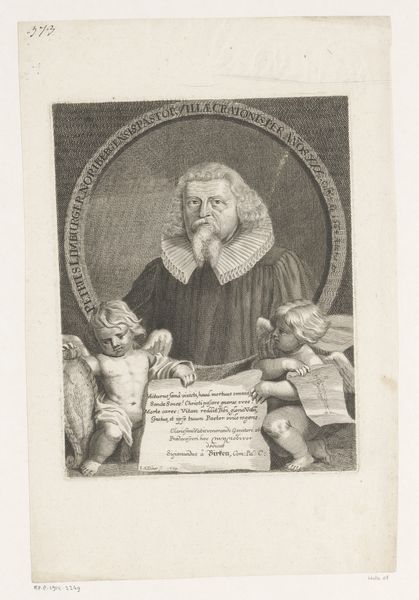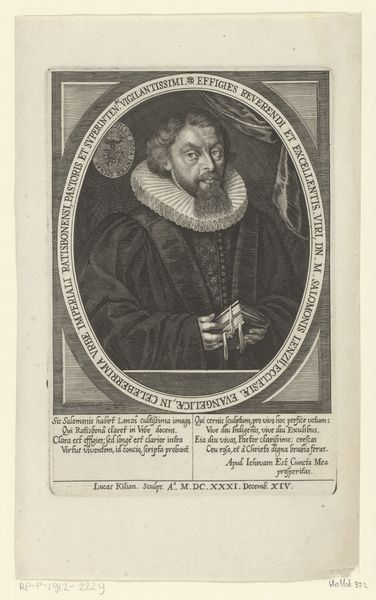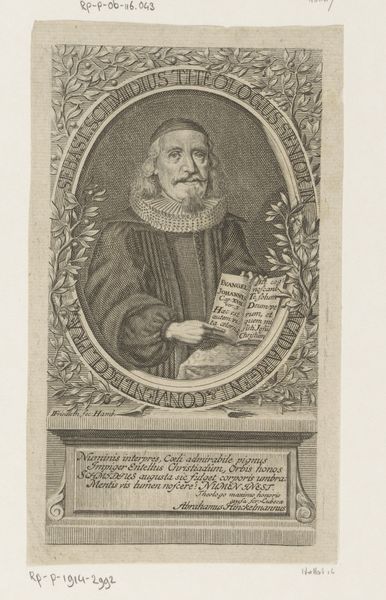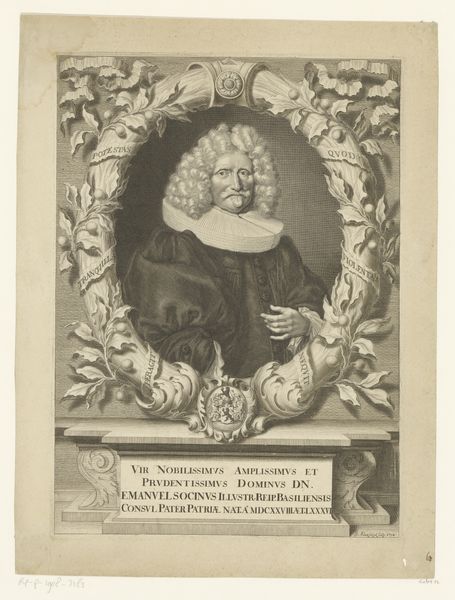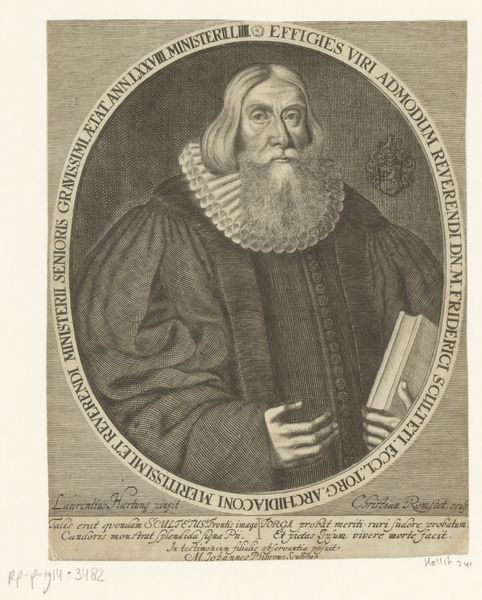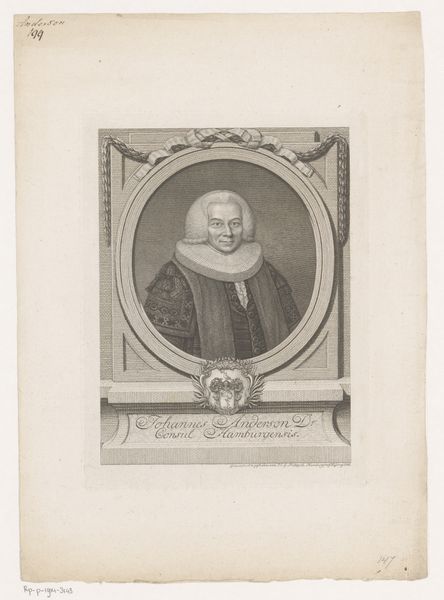
print, paper, engraving
#
portrait
#
aged paper
#
toned paper
#
baroque
# print
#
book
#
old engraving style
#
paper
#
history-painting
#
engraving
Dimensions: height 204 mm, width 156 mm
Copyright: Rijks Museum: Open Domain
Curator: Welcome. Here we have a portrait, crafted between 1660 and 1671, of Sebastian Schmidt, now held at the Rijksmuseum. It’s an engraving on paper. Editor: My first impression is one of reserved dignity, captured in that oval frame. The tones are muted, the lines incredibly precise, giving it an almost scholarly air. The texture of the aged paper only adds to its sense of history. Curator: Absolutely. Notice how the engraver, Johann Philipp Thelott, employs line weight and hatching to sculpt Schmidt's features and create a sense of volume, particularly in the ruff and the contours of his face. See the inscription around the portrait? The careful integration of text and image suggests a desire for completeness of form. Editor: And those layers speak to a printing process, right? Each pull would impact the ink, the pressure on the paper, so even a single engraving could have variances across a run. The materiality of the ink and the fibers of the paper play their own role in the aesthetic impact. You've got me thinking about the economics and techniques necessary to create it! Curator: A sharp point. Consider also, Schmidt is holding a book. What meaning does that have in the image? The composition focuses our gaze upon it. The portrait is, more than just representation, a declaration of erudition, and of spiritual gravitas as seen in the writing under the image. Editor: Right. The book speaks to the social context of knowledge and learning in that period—who had access, who produced these objects, and how they circulated in society. Was this portrait used as a frontispiece? It feels like there are many different iterations possible when looking at printing, making the context vital. Curator: Indeed. In conclusion, "Portret van Sebastian Schmidt," as an exercise in contrasts and symmetries, uses the conventions of Baroque portraiture to project learning and authority in 17th century society. Editor: It certainly highlights how the technical mastery of printmaking could elevate an image into a symbol of its era and, looking back, it creates a bridge to explore its layered material production.
Comments
No comments
Be the first to comment and join the conversation on the ultimate creative platform.
